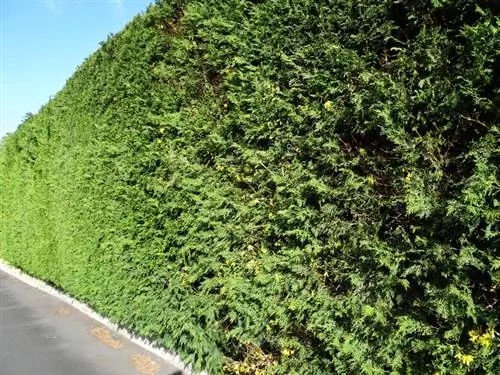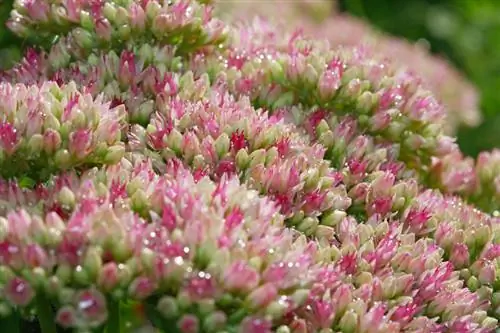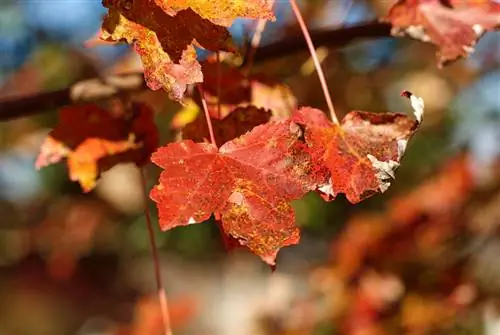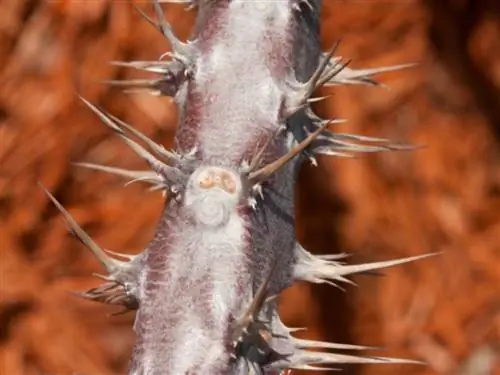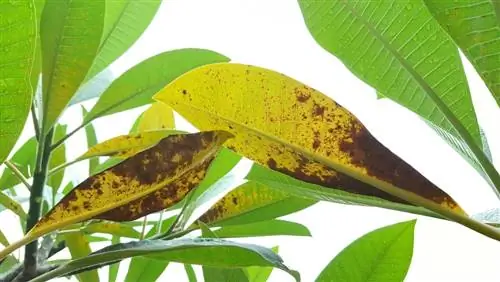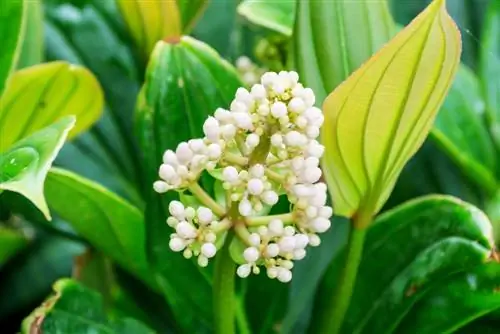- Author admin [email protected].
- Public 2023-12-16 16:46.
- Last modified 2025-01-23 11:20.
In a favorable location and with good care, Leyland cypress trees are hardy and have few problems dealing with pests and diseases. Diseases almost only occur when the Leyland cypress receives too little water or is waterlogged.

What diseases occur in Leyland cypress trees?
Leyland cypress trees can be attacked by pests such as mealybugs, bark beetles and leaf miners, or suffer from diseases such as Seiridium canker, needle blight and Phytophthora root rot. These often occur due to dryness, waterlogging or improper care.
What pests occur on Leyland cypress trees?
- mealybugs
- bark beetle
- Leaf miners
A pest infestation can always occur once. As soon as you notice that the Leyland cypress has been infested with lice, beetles or moths, you should take immediate action.
Cut off severely infected shoots. For small trees, it is worth trying to remove lice and moths by washing them.
If you discover bark beetles on the Leyland cypress, there is only one solution and that is to remove the entire tree. The beetles cannot be controlled and spread to nearby trees.
What do brown spots indicate?
If the shoots of the Leyland cypress turn brown, it is almost always because the tree is too dry or too moist. Waterlogging, which the Leyland cypress does not tolerate, is particularly damaging. If the soil is heavily moist, you should definitely create drainage before planting.
If brown spots appear after the winter, it is not frost damage, as is often assumed, but rather dried branches.
Cut off the affected shoots and ensure that the cypress is watered sufficiently.
Fungal diseases in dry conditions or too much wetness
If the Leyland cypress suffers from a lack of water, it becomes susceptible to fungal diseases such as:
- Seiridium Canker (cancer)
- Needle Brand
- Phytophthora root rot
While Seiridium Canker and needle blight are primarily caused by excessive dryness, root rot occurs due to waterlogging. Canker diseases are manifested by the discoloration of the leaves and the formation of canker sores on the bark.
When there is a severe infestation, there is often nothing left but to completely remove the trees. If the diseases are not yet severe, the use of a fungicide can help.
Tip
The many delicate leaves of the Leyland cypress evaporate a lot of water - even in winter. You should therefore water all cypress trees on frost-free days, even during the winter. The root balls must never dry out completely.

